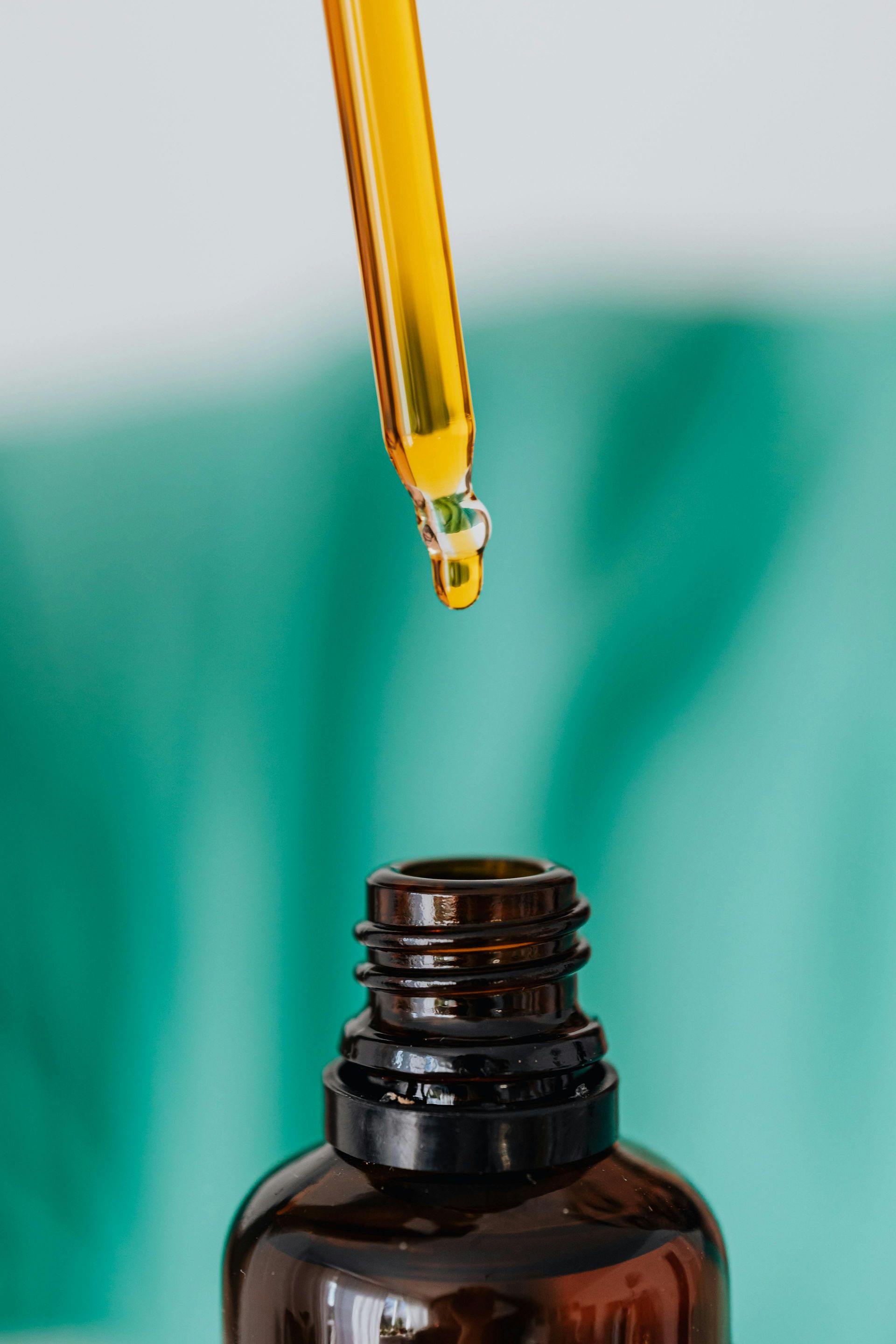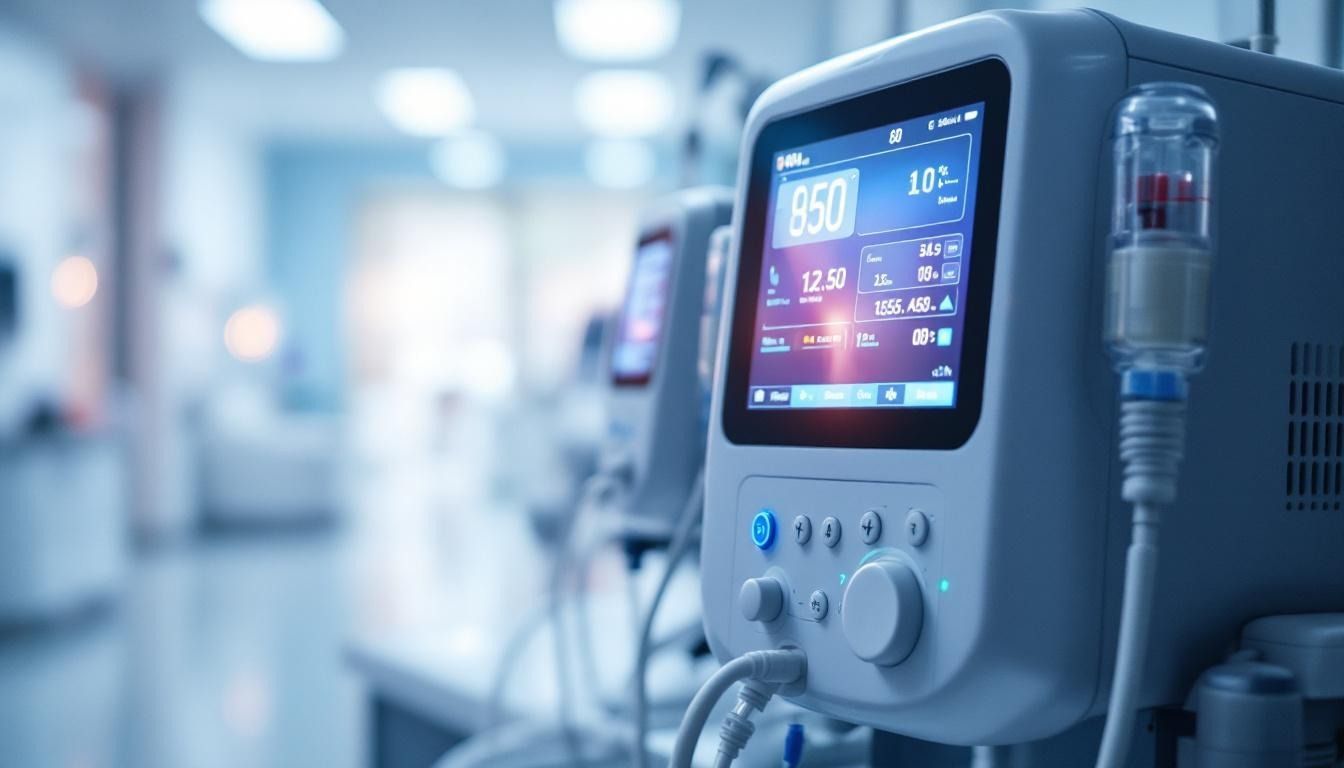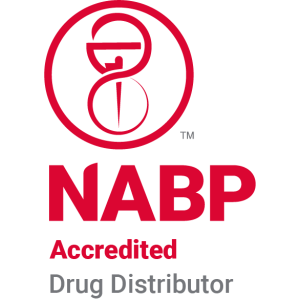Pharmko’s approach to IVIG infusions
Understanding Pharmko’s Tailored IVIG Infusion Methodology
Pharmko has established a comprehensive approach to intravenous immunoglobulin (IVIG) therapy, prioritizing patient safety, treatment efficacy, and adaptability across various autoimmune and immunodeficiency conditions. This article details their protocols, safety guidelines, and clinical practices that underpin successful IVIG administration.
Pharmko’s Overall Approach to IVIG Infusions
What is the protocol for IVIG infusion?
Pharmko emphasizes a patient-centered, evidence-based approach when administering IVIG. The infusion process typically begins with a cautious initial rate—around 0.5 to 1 mL/kg/hour—and continues over the first 15 to 30 minutes. If the patient tolerates this initial phase without adverse reactions, the infusion rate can be gradually increased in increments every 15 to 30 minutes. The maximum rate usually reaches 3 to 6 mL/kg/hour, tailored to the patient’s clinical response and tolerance.
Throughout the infusion, vital signs—such as blood pressure, heart rate, respiration, and temperature—are continuously monitored. This vigilant surveillance ensures any early signs of adverse reactions are promptly addressed, maintaining safety and maximizing therapeutic benefit. Hydration is also crucial; patients are encouraged to drink water before, during, and after infusion to help mitigate side effects.
What is the success rate of IVIG infusions?
The effectiveness of IVIG varies by condition but generally demonstrates a success rate between 60% and 80%. For diseases such as Chronic Inflammatory Demyelinating Polyneuropathy (CIDP) and Guillain-Barre Syndrome, many patients experience significant symptom improvement after treatment. Pharmko’s approach involves careful assessment and personalized adjustments to dosing schedules, which can influence outcomes positively.
The overall success hinges on factors like timing of intervention, dosage appropriateness, and individual patient factors, including disease severity and response. By customizing treatment plans based on rigorous clinical evaluation, Pharmko aims to maximize patient benefits and minimize unnecessary exposure to high doses.
What autoimmune diseases are treated with IVIG?
IVIG is a cornerstone in managing a variety of autoimmune conditions. Pharmko’s protocols target diseases such as rheumatoid arthritis, systemic lupus erythematosus (SLE), Guillain-Barre Syndrome, myasthenia gravis, dermatomyositis, vasculitis, and autoimmune encephalitis.
The treatment regimens often involve high-dose IVIG, administered over 2 to 5 days at doses around 2 g/kg, with cycles repeated every 4 weeks. These protocols leverage IVIG’s dual functionality: neutralizing pathogenic autoantibodies and modulating immune responses to dampen disease activity.
By tailoring these immune-modulating therapies to each patient’s unique disease profile, Pharmko optimizes outcomes while managing potential risks related to high-dose treatments. Safety, efficacy, and patient comfort are at the core of their treatment strategies.
Additional Insights
A comprehensive approach to IVIG therapy incorporates protocols for infusion rates, dosing, and safety monitoring. The process begins with hydration and patient education, followed by stepwise rate increases while observing for reactions.
| Aspect | Protocol | Additional Notes |
|---|---|---|
| Infusion rate | Start at 0.5-1 mL/kg/hr; increase as tolerated | Maximum rate: 3-6 mL/kg/hr |
| Monitoring | Continuous vitals, patient reassessment | Watch for hypersensitivity, reactions |
| Premedication | Usually Tylenol or ibuprofen | To reduce minor side effects |
| Hydration | Adequate fluids before/during/after | Helps prevent renal issues |
| Safety considerations | Use experienced nurses, avoid ports | Prevent infections, thrombosis |
Final Remarks
Pharmko’s approach centers on a delicate balance: providing effective IVIG therapy tailored to each patient’s unique needs while maintaining stringent safety standards. Through evidence-based protocols, personalized dosing, and vigilant monitoring, they aim to ensure optimal treatment outcomes for individuals with autoimmune, immunodeficiency, or inflammatory conditions.
Clinical Protocols and Practices in IVIG Administration

What is the protocol for IVIG infusion?
The administration of intravenous immunoglobulin (IVIG) follows a structured protocol designed to maximize efficacy while minimizing adverse effects. Prior to infusion, patients should be adequately hydrated, and blood pressure, heart rate, temperature, and respiration should be monitored carefully to establish baseline vital signs. The IVIG solution must be brought to room temperature to prevent infusion reactions.
The infusion rate begins slowly, often starting at a rate determined by the patient's tolerance, with gradual escalation as tolerated. It is essential to follow established guidelines, which typically involve increasing the rate incrementally unless adverse reactions occur. Premedication with medications such as Tylenol or ibuprofen can be administered to reduce the incidence of mild side effects like headaches or chills.
During the infusion, continuous monitoring of vital signs is critical, especially in the initial phases or for patients at higher risk of reactions. Healthcare providers should be prepared to slow or stop the infusion if severe side effects are observed. Post-infusion vital signs should also be checked, and hydration maintained to support renal function.
What is the success rate of IVIG infusions?
The success rate of IVIG infusions is generally high across various conditions. In cases such as immune thrombocytopenic purpura (ITP), patients often experience a rapid increase in platelet counts within 24-48 hours, making it effective in urgent settings. For autoimmune dermatoses, including dermatomyositis and autoimmune bullous diseases, IVIG has proven beneficial, with most patients showing clinical improvement within months.
In severe conditions like Stevens-Johnson syndrome (SJS) or toxic epidermal necrolysis (TEN), studies suggest that dosing over 3 days can reduce mortality, though outcomes depend on early intervention and individual patient factors. For cytokine-mediated conditions, response rates vary but are promising, especially when IVIG is used as a second-line or adjunct therapy.
What is the long-term risk of IVIG?
Long-term risks associated with IVIG therapy, although relatively rare, include serious complications such as thromboembolic events, kidney injury, hemolysis, and autoimmune reactions. These risks are heightened in patients with underlying conditions such as hypertension, kidney disease, or cardiovascular issues.
Pharmko stresses the importance of thorough patient assessment before initiation to identify high-risk individuals. Vaccination status should be reviewed, and live vaccines avoided during treatment, as the immune response may be suppressed. Regular monitoring during and after infusions helps detect early signs of adverse events.
Strategies to mitigate long-term risks include using sucrose-free IVIG products to lower renal danger, administering infusions at a gradual rate, ensuring adequate hydration, and conducting routine renal function tests. Additionally, healthcare providers should tailor dosing protocols to the patient's condition, avoiding over-treatment and monitoring for any signs of adverse effects throughout long-term therapy.
Additional considerations for IVIG administration
- Use of experienced, preferably Ig-certified, nurses for infusion delivery.
- Select infusion sites carefully to prevent complications.
- Education of patients about recognizing serious side effects such as hives, shortness of breath, or loss of consciousness.
- Readiness to manage allergic or anaphylactic reactions with emergency protocols.
By adhering to these protocols, healthcare teams can optimize IVIG therapy outcomes, ensure patient safety, and maintain high success rates in treating a range of autoimmune and immunodeficiency conditions.
Methodologies and Treatment Strategies at Pharmko
What autoimmune diseases are treated with IVIG?
IVIG is used to manage a variety of autoimmune conditions. It is often incorporated as a second-line or adjunct therapy for autoimmune bullous dermatoses, collagen vascular diseases, inflammatory myositides, and systemic vasculitides. Additionally, IVIG plays a critical role in the treatment of dermatomyositis, Stevens-Johnson syndrome (SJS) and toxic epidermal necrolysis (TEN), scleromyxedema, Kawasaki disease, and refractory systemic lupus erythematosus (SLE). Its immune-modulating effects help to suppress abnormal immune responses and reduce disease activity.
What is the protocol for IVIG infusion?
The administration of IVIG involves several carefully implemented steps. Prior to infusion, patients are typically hydrated, and pre-medications such as Tylenol or ibuprofen are administered to mitigate mild side effects. The infusion is performed in a clinical setting or at home by trained professionals, with ongoing monitoring of vital signs including blood pressure, heart rate, temperature, and respiration.
The infusion rate starts slow and is gradually increased based on patient tolerance. The IVIG should be administered at room temperature to reduce adverse reactions. In cases requiring high doses, the total amount, such as 2 g/kg, is divided over 2 to 5 days, with the infusion rate carefully controlled and adjusted if the patient exhibits discomfort or adverse symptoms. Patients are observed closely for potential serious reactions like allergic responses, kidney issues, or blood clots, which are rare but require immediate attention.
What is the success rate of IVIG infusions?
IVIG is generally highly effective in quickly elevating immune parameters and managing symptoms, especially in conditions like ITP where platelet counts can rise within 24-48 hours. Its success rate in reducing disease activity varies depending on the specific condition, but many autoimmune disorders respond favorably when administered according to established protocols. Effectiveness is monitored through clinical assessments and laboratory markers such as autoantibody levels. In dermatological and systemic autoimmune diseases, sustained remission or significant symptom reduction is observed in a considerable proportion of treated patients.
Additional insights into IVIG treatment strategies
The choice of IVIG formulation can influence safety and efficacy. Sucrose-free formulations have reduced renal complication risks compared to older products. Proper protocol adherence, including infusion rate adjustments, pre-medications, and patient hydration, enhances tolerability.
Monitoring for adverse effects is essential, with mild symptoms like headaches, chills, or muscle aches often resolving quickly. Serious adverse reactions, though extremely rare, include kidney failure and blood clots, especially in high-risk patients such as those with pre-existing heart or kidney conditions. For these individuals, subcutaneous immunoglobulin (SCIG) may be preferred due to a better safety profile.
Use of alternative IVIG formulations
Advancements in manufacturing have introduced sucrose-free products that lessen the risk of renal toxicity. In specific patient populations, such as those prone to thrombosis or with poor venous access, alternative methods like facilitated SCIG or at-home IVIG infusions managed by specialized staff provide flexibility and improved quality of life.
| Treatment Aspect | Details | Additional Notes |
|---|---|---|
| Dosing Strategies | Typically 2 g/kg divided over 2-5 days, every 4 weeks, tailored per condition | Adjusted based on response and tolerance |
| Condition-specific Regimen | Used for dermatomyositis, SLE, Kawasaki disease, and more, with specific dosing and monitoring protocols | Specific protocols per disease |
| Formulation Options | Sucrose-free IVIG to reduce renal risk; alternative delivery methods for high-risk patients | Includes home infusions and SCIG |
| Monitoring | Vital signs pre and post-infusion, watch for adverse reactions, measures of disease activity | Critical for safety and efficacy |
Through adherence to these strategies, physicians at Pharmko aim to optimize therapeutic outcomes for their patients, balancing efficacy with safety and convenience.
Application of IVIG to Specific Conditions Such as ITP
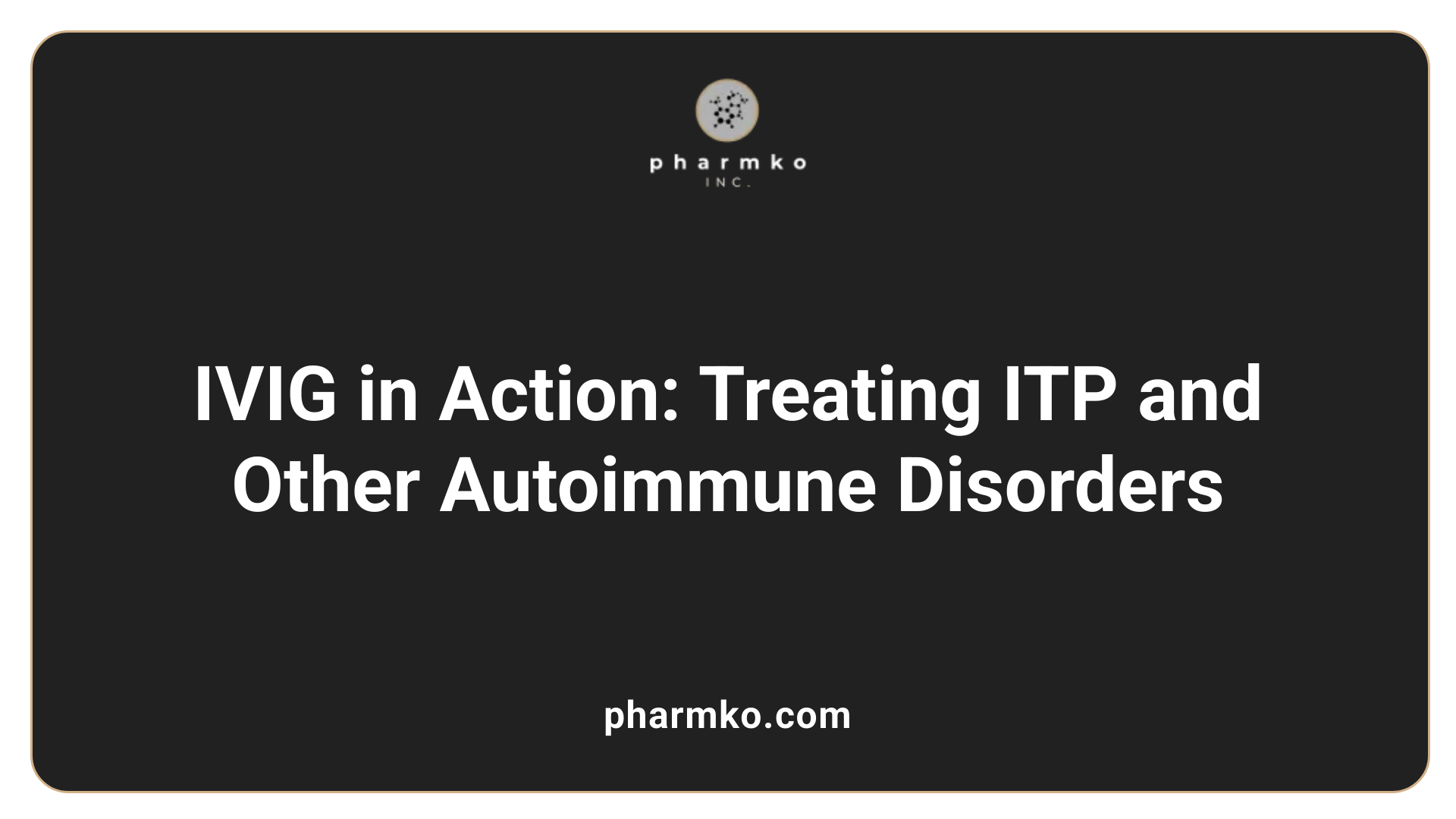
What autoimmune diseases are treated with IVIG?
Intravenous immunoglobulin (IVIG) is widely used in the management of various autoimmune conditions. One prominent example is immune thrombocytopenic purpura (ITP), where IVIG serves as an effective intervention. It also plays a vital role in treating other autoimmune diseases such as dermatomyositis, systemic lupus erythematosus (SLE), autoimmune bullous dermatoses, vasculitides, and syndromes like Stevens-Johnson syndrome (SJS). In these conditions, IVIG helps modulate the immune response, reduce inflammation, and decrease autoantibody activity.
What is the protocol for IVIG infusion?
When treating ITP, the typical protocol involves administering doses of 1 to 2 grams per kilogram of body weight. The infusion usually takes place over 2 to 5 days, with the schedule tailored to the patient’s response and severity of thrombocytopenia. Prior to infusion, patients are often hydrated, and pre-medications such as acetaminophen or ibuprofen may be given to minimize side effects. Healthcare providers closely monitor platelet counts during and after treatment to assess efficacy and watch for adverse reactions.
Patients receiving IVIG should also have vital signs frequently checked, including blood pressure, heart rate, and temperature, to promptly identify any adverse effects. The infusion rate is adjusted based on patient tolerance; a slower rate often helps reduce side effects like headaches and chills.
What is the success rate of IVIG infusions?
In cases of ITP, IVIG usually produces a rapid and substantial increase in platelet levels within 24 to 48 hours. The success rate is high, exceeding 80%, making it an effective emergency treatment to prevent bleeding complications. The dramatic rise in platelets helps stabilize patients in urgent situations, such as severe bleeding or pre-surgical preparations.
This rapid response is attributed to IVIG’s mechanism of overwhelming immune cells and interfering with mechanisms that lead to platelet destruction. Although the effects are often temporary, they provide critical time to implement other treatments or manage ongoing bleeding risks.
Additional Details on IVIG Use in ITP
| Aspect | Details | Notes |
|---|---|---|
| Disease | Immune thrombocytopenic purpura (ITP) | Autoimmune condition causing platelet destruction |
| Dosing | 1-2 g/kg over 2-5 days | Individualized based on severity |
| Response Time | Within 24-48 hours | Rapid increase in platelets |
| Success Rate | Over 80% | Effective as emergency therapy |
| Monitoring | Platelet count, vital signs | Watch for adverse reactions |
| Common Side Effects | Headache, fatigue, chills | Usually mild and short-term |
| Serious Reactions | Rare, includes allergic responses | Immediate medical attention required |
IVIG remains an essential part of the therapeutic arsenal for ITP, especially when quick elevation of platelet counts is necessary. Its ability to rapidly modulate the immune response provides lifesaving benefits in acute settings.
Safety Guidelines, Patient Management, and Administration Procedures

What is the protocol for IVIG infusion?
The administration of intravenous immunoglobulin (IVIG) requires strict adherence to established protocols to ensure patient safety and treatment efficacy. The infusion should begin at a slow rate, with careful escalation based on patient tolerance. This approach involves starting with a low infusion rate and gradually speeding up as tolerated. Premedication with Tylenol (acetaminophen) or antihistamines can be administered before the infusion to reduce the likelihood of mild adverse reactions such as headaches or chills.
Throughout the infusion, continuous monitoring of vital signs—including blood pressure, heart rate, temperature, and respiration—is essential. Typically, patients are observed before, during, and after the infusion to detect early signs of any adverse reactions. This vigilant approach helps manage potential complications promptly, minimizing discomfort and risk.
What is the success rate of IVIG infusions?
The success of IVIG therapy is primarily measured by achieving the desired therapeutic outcomes, such as improved immune function and increased platelet counts in cases like ITP. Equally important is the effective management of any adverse effects that may arise during or after infusion.
Pharmko and other reputable providers maintain high safety standards through rigorous adherence to infusion protocols, careful patient selection, and thorough monitoring. While mild reactions such as headache, fatigue, or chills are common, severe complications are rare when proper procedures are followed. Success rates are therefore high, owing to the combination of effective clinical practices and continuous patient assessment.
What is the long-term risk of IVIG?
Long-term risks associated with IVIG are generally low when patients are carefully screened and monitored. However, some susceptible individuals may experience complications over time. These include a small risk of thrombosis, particularly in patients with pre-existing cardiovascular conditions, and renal problems, especially in those with underlying kidney disease.
To mitigate these risks, healthcare providers employ multiple safeguards such as using newer sucrose-free IVIG formulations to reduce renal strain, maintaining hydration before and after infusion, and adjusting doses based on patient health status. Long-term monitoring involves periodic assessment of kidney function and vigilance for signs of blood clots. Overall, with comprehensive screening and vigilant follow-up, long-term adverse effects are minimized, ensuring safer outcomes for patients receiving repeated IVIG treatments.
| Aspect | Detailing | Additional Notes |
|---|---|---|
| Infusion Protocol | Slow start, gradual escalation, premedication | Tailored to patient tolerance and medical history |
| Monitoring During Infusion | Vital signs, patient observation | Continuous, with immediate response protocols |
| Adverse Reaction Management | Hydration, infusion rate adjustment, symptomatic treatment | Rapid intervention essential for severe reactions |
| Long-term Risk | Thrombosis, kidney issues | Minimized with new formulations and patient-specific precautions |
| Success Indicators | Therapeutic outcomes, adverse reaction control | High success rate with proper implementation |
This structured approach to IVIG infusion helps optimize therapeutic benefits while minimizing risks, ensuring a safe and effective treatment experience for patients across diverse conditions.
Process of Preparing, Administering, and Managing IVIG Treatments
Preparation steps
Preparing for IVIG infusion involves several crucial steps to ensure safety and effectiveness. Healthcare providers start by confirming that the patient is well-hydrated before the infusion, as hydration helps prevent kidney complications. The immunoglobulin solution is brought to room temperature to avoid causing discomfort or adverse reactions related to temperature changes.
Pre-medication is common, with drugs like Tylenol (acetaminophen) or ibuprofen administered before infusion to reduce the likelihood of mild side effects such as headaches, chills, and fever. Moreover, vital signs such as blood pressure, heart rate, temperature, and respiration are measured to establish a baseline and monitor the patient throughout the procedure.
Selecting an experienced infusion nurse, ideally with certification in immunoglobulin administration, is essential. With strict adherence to sterility protocols, the healthcare team confirms that all infusion materials are sterile, and the environment maintains cleanliness to minimize infection risks.
Administering IVIG
The infusion process begins with slow rate escalation, starting at a low flow to monitor for adverse reactions. The rate is carefully adjusted, usually increasing gradually over the first 30-60 minutes, depending on patient tolerance. Continuous monitoring during infusion includes watching for any signs of allergic reactions, changes in vital signs, or discomfort.
Throughout the procedure, the infusion staff carefully observe the patient, ready to respond to any adverse reactions promptly. To further minimize side effects, patients are encouraged to hydrate by drinking water before, during, and after the infusion.
For patients at higher risk of complications, such as those with heart or kidney issues, alternative administration routes like subcutaneous immunoglobulin (SCIG) may be preferred. These patients are closely monitored, and infusion rates are adjusted according to their health status.
Post-infusion care and follow-up
After the infusion concludes, patients are monitored for a period to catch any delayed reactions, particularly allergic responses or symptoms indicating kidney problems. Blood pressure, heart rate, and overall well-being are reassessed.
Patients are advised to report any unusual symptoms immediately, such as difficulty breathing, hives, or swelling, which could indicate allergic reactions. Hydration is continued post-infusion to support kidney function.
Follow-up involves scheduling subsequent infusions based on disease management protocols, typically every 3-4 weeks. Regular lab tests and clinical evaluations are performed to monitor treatment efficacy and detect any long-term adverse effects.
Pharmko specializes in IVIG treatments, offering comprehensive management including patient education, insurance support, and at-home infusions for suitable candidates. Ensuring proper preparation, vigilant administration, and thorough follow-up enhances the safety and success of IVIG therapy.
| Step | Description | Additional Details |
|---|---|---|
| Preparation | Confirm hydration, room temperature, premedicate | Vital signs baseline, sterile environment |
| Administration | Gradual rate escalation, continuous monitoring | Adjust based on patient tolerance |
| Post-infusion Monitoring | Observe for delayed reactions, reassess vital signs | Hydration support, patient education |
| Follow-up | Schedule next infusion, conduct lab tests, monitor efficacy | Long-term safety measures |
This meticulous process aims to maximize benefits while minimizing risks, ensuring patients receive effective and safe IVIG treatment.
Knowledge of Pharmko’s Treatment Methodologies, Including Brands and Procedures
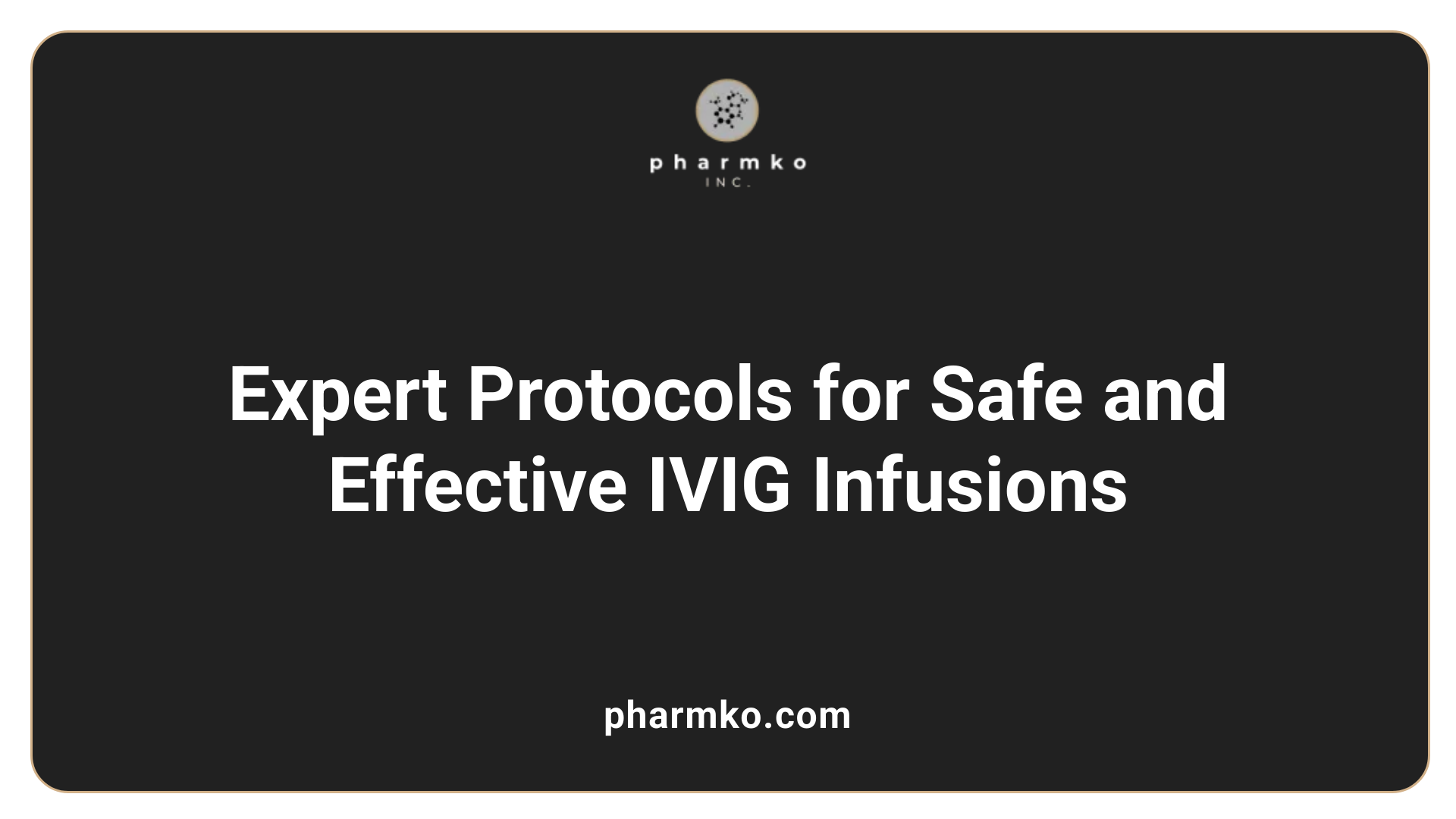
How is IVIG infusion typically carried out?
The infusion of intravenous immunoglobulin (IVIG) requires careful preparation and monitoring to ensure safety and efficacy. The process begins with pre-infusion assessments, including hydration and premedication with agents like Tylenol or ibuprofen to minimize side effects such as headaches and chills. It is essential that the IVIG product used is of high quality, preferably sucrose-free, to reduce the risk of kidney complications.
Administered by trained healthcare professionals, IVIG is infused through a vein at a controlled rate, which may be gradually slowed if adverse reactions occur. Patients are closely monitored throughout the procedure with checks on blood pressure, heart rate, temperature, and respiration both before and after the infusion. For safety, infusion rates are tailored to each patient’s tolerance, and hydration is maintained to assist in preventing renal issues.
The products selected must meet strict sterility and quality standards. Pharmko emphasizes sourcing from reputable suppliers with rigorous manufacturing controls to ensure the purity and safety of the IVIG administered.
How successful are IVIG infusions?
Success rates of IVIG treatments are notably high, owing largely to adherence to established protocols, strict quality control measures, and the selection of appropriate formulations. When infused correctly, IVIG can rapidly elevate immune function, such as boosting platelet counts in immune thrombocytopenic purpura (ITP) within 24 to 48 hours.
The consistent application of standardized protocols, including proper infusion rates, premedication, and patient monitoring, underpins the reliable outcomes seen with IVIG therapy. Pharmko’s commitment to using high-quality products and adhering to international safety standards further enhances treatment success.
What are the long-term risks associated with IVIG?
Despite its benefits, IVIG therapy carries potential long-term risks, particularly in vulnerable patient groups. Thrombosis and kidney failure are notable concerns, especially when using sucrose-containing products, although newer sucrose-free formulations significantly reduce renal risks.
Patients with pre-existing cardiovascular or kidney conditions require careful monitoring and may benefit from alternative administration routes such as subcutaneous infusions (SCIG). Pharmko adopts comprehensive risk management strategies, including patient screening and regular follow-ups, to mitigate these risks.
In summary, while IVIG remains a potent treatment for various autoimmune and immunodeficiency conditions, careful consideration of product selection, administration protocols, and ongoing surveillance are vital. Pharmko’s standards and oversight aim to maximize safety and therapeutic success, ensuring treatments align with the highest industry benchmarks.
| Aspect | Details | Additional Notes |
|---|---|---|
| Product Quality | Use high-quality, sucrose-free IVIG products to minimize renal risks | Ensures safety and efficacy |
| Infusion Protocol | Controlled infusion rates, hydration, premedication, monitoring | Tailored to patient tolerance |
| Long-term Risks | Thrombosis, kidney failure | Managed through careful screening and product choice |
| Safety Measures | Sterility, quality control, professional administration | Critical for successful outcomes |
This comprehensive approach underscores Pharmko's dedication to delivering safe, effective IVIG treatments while continuously adopting best practices and state-of-the-art standards.
Optimizing Patient Outcomes with Pharmko's Protocols
Through the integration of carefully crafted clinical protocols, rigorous safety guidelines, and personalized treatment strategies, Pharmko exemplifies excellence in IVIG infusion therapy. By prioritizing patient safety, leveraging evidence-based practices, and utilizing high-quality products, Pharmko ensures effective management of autoimmune and immunodeficiency conditions, ultimately enhancing patient outcomes and quality of life.
References
- Best Practices and Guidelines in Immunoglobulin Therapy
- A Guide to IVIG Treatment for ITP - AmeriPharma® Specialty Care
- Safety important for successful immunoglobulin replacement therapy
- Intravenous Immunoglobulin (IVIG) | OncoLink
- A Review of the Use of Intravenous Immunoglobulin Therapy in ...
- IVIG and Autoimmune Diseases: How IVIG Helps Manage Symptoms
- IVIG and Chronic Infections: How IVIG Boosts the Immune System
- IVIG Mechanism of Action: Unraveling the Enigma of This Potent ...
- What Is IVIG Infusion Treatment? - AmeriPharma® Specialty Care



